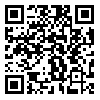Volume 14, Issue 3 (Aug & Sep 2020)
payavard 2020, 14(3): 201-214 |
Back to browse issues page
Download citation:
BibTeX | RIS | EndNote | Medlars | ProCite | Reference Manager | RefWorks
Send citation to:



BibTeX | RIS | EndNote | Medlars | ProCite | Reference Manager | RefWorks
Send citation to:
khasha R, Sepehri M M, Taherkhani N. Asthma Control Level Assessment by Moving from the Current Reactive Care Models into a Preventive Approach based on Fuzzy Clustering and Classification Algorithms. payavard 2020; 14 (3) :201-214
URL: http://payavard.tums.ac.ir/article-1-6994-en.html
URL: http://payavard.tums.ac.ir/article-1-6994-en.html
1- Ph.D. in Information Technology Engineering, Center of Excellence in Healthcare Systems Engineering, Faculty of Industrial and Systems Engineering, Tarbiat Modares University, Tehran, Iran
2- Professor, Department of Healthcare Systems Engineering, Faculty of Industrial and Systems Engineering, Tarbiat Modares University, Tehran, Iran ,mehdi.sepehri@modares.ac.ir
3- Instructor, Department of Computer Engineering, Faculty of Engineering, Payam-e-Noor University, Saveh, Iran
2- Professor, Department of Healthcare Systems Engineering, Faculty of Industrial and Systems Engineering, Tarbiat Modares University, Tehran, Iran ,
3- Instructor, Department of Computer Engineering, Faculty of Engineering, Payam-e-Noor University, Saveh, Iran
Abstract: (2541 Views)
Background and Aim: Asthma is a common and chronic disease of respiratory tracts. The best way to treat Asthma is to control it. Experts of this field suggest the continues monitoring on Asthma symptoms and adjustment of self-care plan with offering the preventive treatment program to have desired control over Asthma. Presenting these plans by the physician is set based on the control level in which the patient is. Therefore, successful recognition and classification of the disease control level can play an important role in presenting the treatment program to the patient and improves the self-care and strengthens the early interventions to alleviate the Asthma symptoms.
Materials and Methods: Based on this objective, we collected the data of 96 Asthma patients within a 9-month period from a specialized hospital for pulmonary diseases in Tehran. Then we classified the Asthma control level by fuzzy clustering and different types of data mining method within a multivariate dataset with the multi-class response variable.
Results: Our best model resulting from the balancing operations and feature selection on data have yielded the accuracy of 88%.
Conclusion: Our proposed model can be applied in electronic Asthma self-care systems to support the decision in real time and personalized warnings on the possible deterioration of Asthma control. Such tools can centralize the Asthma treatment from the current reactive care models into a preventive approach in which the physician’s decisions and therapeutic actions are resulting from the personal patterns of chronic Asthma control and prevention of acute Asthma.
Materials and Methods: Based on this objective, we collected the data of 96 Asthma patients within a 9-month period from a specialized hospital for pulmonary diseases in Tehran. Then we classified the Asthma control level by fuzzy clustering and different types of data mining method within a multivariate dataset with the multi-class response variable.
Results: Our best model resulting from the balancing operations and feature selection on data have yielded the accuracy of 88%.
Conclusion: Our proposed model can be applied in electronic Asthma self-care systems to support the decision in real time and personalized warnings on the possible deterioration of Asthma control. Such tools can centralize the Asthma treatment from the current reactive care models into a preventive approach in which the physician’s decisions and therapeutic actions are resulting from the personal patterns of chronic Asthma control and prevention of acute Asthma.
Send email to the article author
| Rights and permissions | |
 |
This work is licensed under a Creative Commons Attribution-NonCommercial 4.0 International License. |





